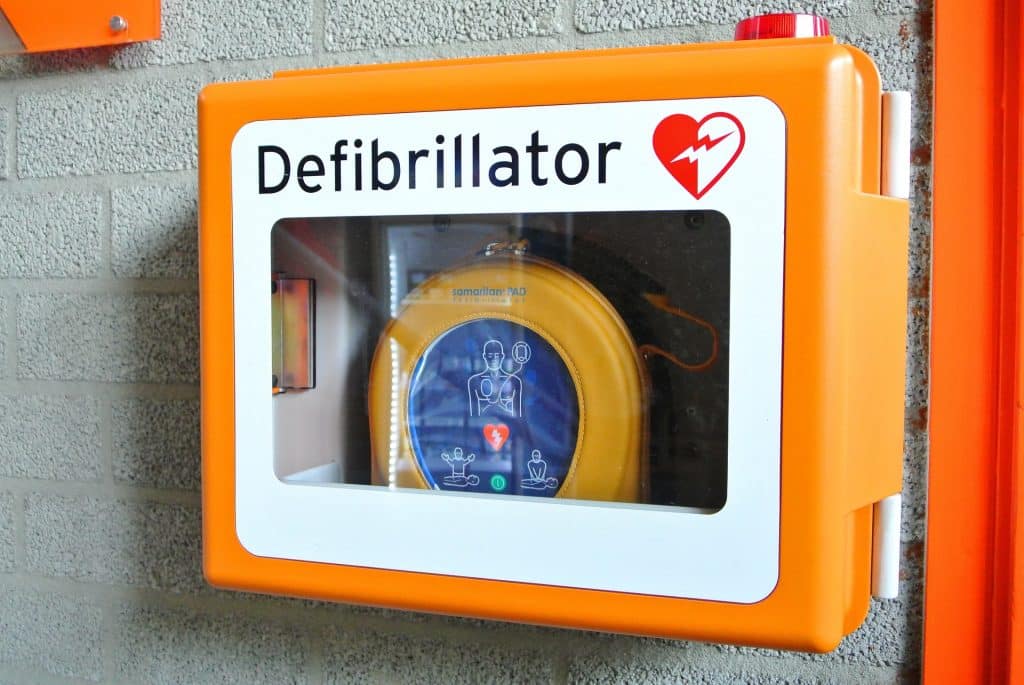No products in the cart.
Uncategorized
What To Do When a Defibrillator is Required?
Sudden cardiac arrest is a terrifying situation that requires immediate action. If someone collapses and is unresponsive, they may be experiencing sudden cardiac arrest. This means their heart has stopped pumping blood effectively. Without prompt treatment, they will die within minutes without using Defibrillator.
The most effective treatment for sudden cardiac arrest is defibrillation – delivering an electric shock to the heart to restore a normal heart rhythm. Automated external defibrillators (AEDs) are portable devices that can be used by bystanders to deliver this lifesaving shock.
If you ever find yourself in a situation where a defibrillator is required, it’s critical to act quickly and calmly. Here’s what you need to do:
1. Call for Help

The first step is to call emergency services immediately. Dial 911 or your local emergency number. Clearly state that someone is in cardiac arrest and request an ambulance. If there are other people around, assign someone to make the call while you begin CPR.
2. Start CPR
While waiting for emergency responders, begin hands-only CPR. This involves pressing hard and fast in the centre of the chest to the beat of a familiar song that has 100-120 beats per minute, such as “Stayin’ Alive”.To perform hands-only CPR:
- Place the heel of one hand in the centre of the person’s chest, between the nipples. Place your other hand on top of the first.
- Interlace your fingers and keep your elbows straight.
- Press down firmly and quickly 2-2.4 inches (5-6 cm) on each compression.
- Allow the chest to fully recoil between compressions.
- Deliver 100-120 compressions per minute.
Continue CPR until the AED arrives or the person begins to move or breathe normally.
3. Use the AED

As soon as an AED Defibrillator becomes available, turn it on and follow the voice prompts. The AED will guide you through the process:
- Expose the person’s bare chest and wipe it dry if needed.
- Attach the electrode pads exactly as shown on the pictures on the pads, usually one on the upper right chest and one on the lower left chest.
- Stop CPR and make sure no one is touching the person when the AED is about to analyse the heart rhythm. The AED will automatically analyse the heart rhythm.
- If a shock is needed, the AED will charge automatically. Keep clear of the person. Push the flashing shock button as instructed.
- After the shock, immediately resume hands-only CPR. Do 2 minutes before the AED prompts you to stop and check for movement or breathing.
- Continue following the AED’s voice prompts until emergency responders arrive and take over.
4. Provide Support
While waiting for emergency responders, continue to monitor the person’s breathing and pulse. If they stop breathing or lose pulse, resume CPR.If the person starts breathing and moving, place them in the recovery position on their side. Cover them with a blanket to keep them warm. Provide reassurance and comfort until help arrives.
5. Debrief and Recover

After the incident, take time to process what happened. Witnessing a medical emergency can be traumatic. Seek support from loved ones, coworkers, or a counsellor if needed.Consider taking a CPR and AED training course so you are prepared to act if you ever find yourself in a similar situation. The more people who are trained, the more lives can be saved.
Conclusion of Defibrillator
Sudden cardiac arrest is a life-threatening emergency that requires immediate action. By calling 911, starting CPR, using an AED, and providing support, bystanders can greatly improve the chances of survival. With proper training and access to AEDs Defibrillators, more lives can be saved from sudden cardiac arrest.
FAQs of Defibrillator
Q1: What is a defibrillator?
A: A defibrillator is a medical device that delivers an electric shock to the heart to restore a normal rhythm during cardiac arrest.
Q2: When should I use a defibrillator?
A: Use a defibrillator when someone is unresponsive and not breathing. Call emergency services immediately before using the device.
Q3: How do I use an AED?
A: Turn on the AED, attach the pads to the person’s bare chest as instructed, and follow the voice prompts. The device will analyse the heart rhythm and advise if a shock is needed.
Q4: Do I need training to use a defibrillator?
A: While AEDs are designed for public use, training in CPR and AED operation is highly recommended to boost confidence and effectiveness.
Q5: What should I do after using a defibrillator?
A: Ensure the individual receives medical attention, monitor their condition, and report the use of the AED for maintenance.






